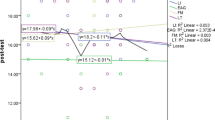Abstract
This study investigated the effects of three different types of electronic textual glosses, tooltip-type glossing, frame-type glossing, and concordance glossing on foreign language vocabulary learning. While the first two glossing types provide the definitions of glossed words, with the only difference being their user interface designs, the third type provides authentic concordance sentences for glossed words. A total of 83 university students of English as a foreign language (EFL) participated in the study. They completed a computer-based reading task, meaning-recall vocabulary tests at three different points in time, and a post-reading questionnaire. The results showed that the intermediate EFL learners were affected not by a difference in terms of glossing formats, but by the type of information provided, with tooltip-type and frame-type glosses bringing about more positive learning outcomes. While the three groups all experienced a similar cognitive load, the findings further revealed that the tooltip-type and frame-type groups made greater gains of target vocabulary than their concordance counterpart. Moreover, the participants from the two former groups consequently rated their respective glossing more positively than those from the latter group.




Similar content being viewed by others
References
Abraham, L. B. (2008). Computer-mediated glosses in second language reading comprehension and vocabulary learning: A meta-analysis. Computer Assisted Language Learning, 21(3), 199–226.
AbuSeileek, A. F. (2011). Hypermedia annotation presentation: The effect of location and type on the EFL learners’ achievement in reading comprehension and vocabulary acquisition. Computers & Education, 57(1), 1281–1291.
Al-Seghayer, K. (2003). Technological and pedagogical considerations for a more effective electronic glossary. The Reading Matrix, 3(1), 1–15. Retrieved from http://www.readingmatrix.com/articles/al-seghayer/article.pdf.
Chapelle, C. (2003). English language learning and technology. Philadelphia: John Benjamins Publishing Company.
Chen, I.-J., & Yen, J.-C. (2013). Hypertext annotation: Effects of presentation formats and learner proficiency on reading comprehension and vocabulary learning in foreign languages. Computers & Education, 63, 416–423.
Cobb, T. (1997). Is there any measurable learning from hands-on concordancing? System, 25(3), 301–315.
Cunningham, S., Moor, P., & Carr, J. C. (2003). Cutting Edge Advanced with Phrase Builder. Harlow: Pearson Education.
Fraser, C. A. (1999). Lexical processing strategy use and vocabulary learning through reading. Studies in Second Language Acquisition, 21(2), 225–241.
Johns, T. (1986). Micro-concord: A language learner’s research tool. System, 14(2), 151–162.
Krashen, S. (1989). We acquire vocabulary and spelling by reading: Additional evidence for the input hypothesis. The Modern Language Journal, 73(4), 440–464.
Laufer, B., & Goldstein, Z. (2004). Testing vocabulary knowledge: Size, strength, and computer adaptiveness. Language Learning, 54(3), 399–436.
Lee, H., & Lee, J. H. (2013). Implementing glossing in mobile-assisted language learning environments: Directions and outlook. Language Learning & Technology, 17(3), 6–22. Retrieved from http://llt.msu.edu/issues/october2013/emerging.pdf.
Nagy, W. E., Herman, P. A., & Anderson, R. C. (1985). Learning words from context. Reading Research Quarterly, 20(2), 233–253.
Nassaji, H. (2003). L2 vocabulary learning from context: Strategies, knowledge sources, and their relationship with success in L2 lexical inferencing. TESOL Quarterly, 37(4), 645–670.
Nation, I. S. P. (2009). New roles for FL vocabulary? In L. Wei & V. Cook (Eds.), Contemporary applied linguistics volume 1: Language teaching and learning (pp. 99–116). London: Continuum.
Paribakht, T. S., & Wesche, M. (1997). Vocabulary enhancement activities and reading for meaning in second language vocabulary acquisition. In J. Coady & T. Huckin (Eds.), Second language vocabulary acquisition (pp. 174–200). Cambridge: Cambridge University Press.
Poole, R. (2012). Concordance-based glosses for academic vocabulary acquisition. CALICO Journal, 29(4), 679–693.
Schmitt, N. (1997). Vocabulary learning strategies. In N. Schmitt & M. McCarthy (Eds.), Vocabulary: Description, acquisition, and pedagogy (pp. 199–228). Cambridge: Cambridge University Press.
Schmitt, N. (2008). Review article: Instructed second language vocabulary learning. Language Teaching Research, 12(3), 329–363.
Sweller, J., Ayres, P., & Kalyuga, S. (2011). Cognitive load theory. New York: Springer.
Yeung, A. S. (1999). Cognitive load and learner expertise: Split-attention and redundancy effects in reading comprehension tasks with vocabulary definitions. The Journal of Experimental Education, 67(3), 197–217.
Acknowledgments
This research was supported by 2013 research funds of the Hwarang-dae Research Institute at Korea Military Academy (Research No. 20130506).
Author information
Authors and Affiliations
Corresponding author
Appendices
Appendix 1: Details on Tooltip-type and Frame-type Glosses
Details on tooltip-type and frame-type glosses in light of previous research are as follows: Tooltip-type glosses share a thread with the integrated format in Yeung (1999) in that they always appear physically close to the glossed words. This makes tooltip-type glosses also similar to after-glossed-word glosses in that they take advantage of their close proximity to the glossed words (AbuSeileek 2011). However, tooltip-type glosses have an additional advantage over after-glossed-word glosses. The latter insert glossary information directly into the target sentence containing a glossed word when a user clicks the word, and this process appears to cause some changes in the shape of the surrounding paragraph and sentences. This may then bring about negative effects on one’s reading flow. Contrary to this format, tooltip-type glosses were designed not to affect the structure of a target text (see Material and Experimental Conditions for more details in terms of its design). Frame-type glosses, on the other hand, are largely equivalent to bottom glosses in AbuSeileek (2011), as the glossary information appears in the bottom frame of the screen, once it is activated. This type of glossing may be preferred by learners who do not want glossary information to appear immediately around the glossed word.
Appendix 2: Meaning-recall Test
Provide the meaning of the following words in either English (synonym/definition) or Korean.
Plethora | ___________________ |
Attest | ___________________ |
Be beset with | ___________________ |
Corrode | ___________________ |
Dismayed | ___________________ |
Endowments | ___________________ |
Idiot savant | ___________________ |
Nocturnal | ___________________ |
Toddler | ___________________ |
Vestige | ___________________ |
Rights and permissions
About this article
Cite this article
Lee, H., Lee, J.H. The Effects of Electronic Glossing Types on Foreign Language Vocabulary Learning: Different Types of Format and Glossary Information. Asia-Pacific Edu Res 24, 591–601 (2015). https://doi.org/10.1007/s40299-014-0204-3
Published:
Issue Date:
DOI: https://doi.org/10.1007/s40299-014-0204-3




